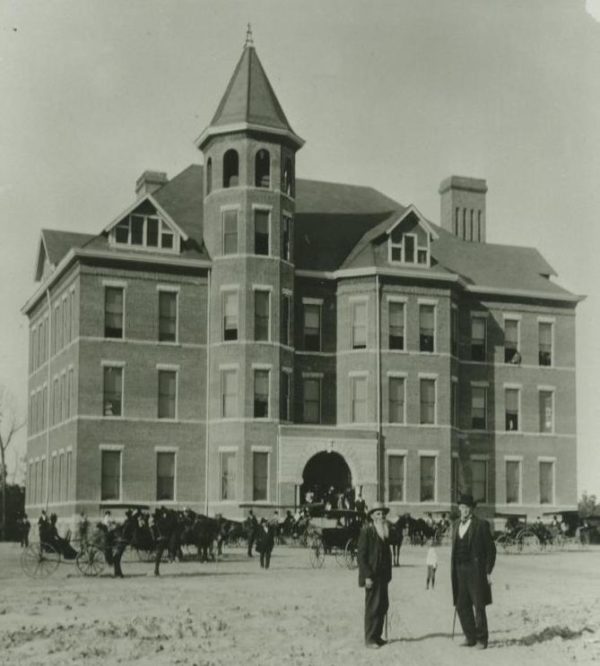23 Aug On This Day in UB History: August 18 (Huntington University)
The August 18 post got missed thanks to vacation scheduling. Since no other “On This Day” item is scheduled for today (August 23), we’ll post it now.
In 1896, our de facto “denominational” college was Hartsville College south of Indianapolis, Ind. It was under the control of a board of trustees sympathetic to, but not accountable to, the United Brethren church. The denominational Board of Education wanted a college directly under its control, so they began looking around. Then, out of the blue, they received an offer too good to refuse.
A group called the Huntington Land Association, headed by a United Brethren minister who was also a contractor, wanted to develop an area north of Huntington, Ind., just outside the city limits. They used an arrangement which was not uncommon back then. There would be 262 lots in what was called the College Park Addition. These lots would sell for an average of $225. Here’s the deal: if the church would sell 102 of the lots, the Huntington Land Association would donate land for a college and spend at least $35,000 to erect a building.
We would basically be getting a college for free. A contract between the Huntington Land Association and the denomination was signed on March 11, 1896. Hartsville’s president, Bishop Halleck Floyd, protested on behalf of the Hartsville trustees, but in vain. The contract was signed. And thus began Central College–to be renamed Huntington College 20 years later.
Construction on what became the Administration Building started almost right away, and the foundation was completed by August. That meant they could lay the cornerstone.
That happened on August 18, 1896. It was a big event, with about a thousand people coming out. Two days before, a Chicago evangelist had conveniently concluded several weeks of revival meetings in Huntington. They moved his tent, platform, and chairs to the college site for the ceremony. A band from Huntington played music.
All of the bishops took part in the ceremony—Milton Wright, Horace Barnaby, Halleck Floyd, and Henry Becker. The cornerstone was a two-foot-square white marble block. Wright put a number of items into it: a Bible, a history of the United Brethren church, an 1893 UB Discipline, a copy of the Christian Conservator church paper, Sunday school quarterlies, the 1896 United Brethren yearbook, the business card of the contractor, and other papers. Two stone masons helped Wright position the cornerstone. And there it remained for 100 years.
The cornerstone was opened in 1997 during the college’s centennial year, and the time capsule was removed. Copies were made of all documents and placed in the Archives for a while. Then everything was returned to the time capsule–copies, in some cases, since insects had partially eaten some documents–and the time capsule was placed back in the cornerstone.
What about Hartsville College? On June 15, 1896, the Hartsville board of trustees voted to suspend operations for a year, and got on board with Central College. They gave the denominational Board of Education, which doubled as the Central College board of trustees, all of Hartsville’s books, records, student grades, etc. On January 30, 1898, fire destroyed the Hartsville building (possibly arson). No going back.


No Comments